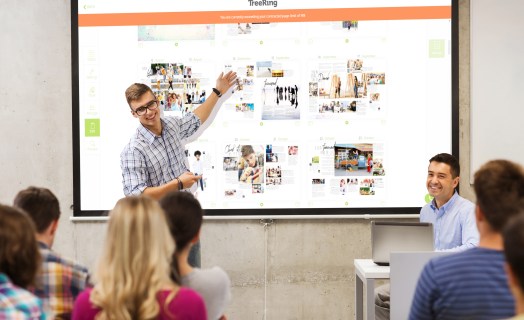
Erikalinpayne
November 16, 2025
2
Min Read Time

It's no secret to seasoned advisers that yearbook class is one of the most accurate career-preparation courses available to students. The yearbook-building process meets all of the national Career-Ready Practices. We’ll go through each below with practical application ideas for yearbook classes.
Weekly goal-setting and check-ins maintain a culture of accountability while building executive functioning skills. First, project your ladder and page assignments. Then, reverse engineer some major milestones. From there, students can set a goal, calendar important dates, and pre-plan how they will meet their deadlines. Do this corporately so each student can see his/her contribution.
Keep in mind, a first-year yearbie/yerd/yearbook student should have a different skill set than a third-year one! Returning staffers are excellent resources to teach skills, especially those on your editorial board.
Because you corporately planned the year, you already know when the pinch points are going to be. Plan a few fun days before and after to help students relieve stress, and show them the importance of balance.
Also, be transparent about finances. Your yearbook students should know how much it costs to produce their yearbook. Likewise, they should know financial goals (book and ad sales) and celebrate their achievement.
All the work you do from a syllabus to the page ladder and assignment provides the overarching structure. Bi-weekly editorial meetings and all staff meetings should include check-ins, deadline assessment, and teaching moments to provide accountability and hone these skills:

These are Treering’s core values. From sustainably sourced printing materials to partnering with charities, the environmental and socio-economic impact of a yearbook transforms lives. Additionally, ethical reporting and creating an inclusive yearbook are hallmarks of positive social impact.
(We’re just going to leave this one here.)
What we see in many yearbooks are photographs of the actual events, and we miss ASB creating poster after poster for spirit week, Mr. Watts cleaning up until 2 AM, the baseball team volunteering to haul hay bales, etc.
Also, coverage doesn’t have to follow the traditional photo/caption format. Create infographics and polls, show game statistics and team scoreboards, and use quotes from differing perspectives to tell the story of your year.

Module 2 of Treering’s free curriculum will help you unify your team and build trust.
Using the yearbook job descriptions in Treering’s curriculum guide, work with your team to create resumes, detailing their job experience in yearbook class. While many think, “I put pictures on paper,” they don’t see things like:
It’s our job, advisers, to show them their impact! Then show their parents. Then show your administration.
Your yearbook software plus a digital planning tool such as a Gantt Chart in Google Sheets or a Trello board will keep you on track.
What do you do when a photographer does not show up for a game? How do you handle an event being canceled or rescheduled? What do you do when someone accidentally reformats a card prior to photos being uploaded? The yearbook creation process is all about pivoting. Build in contingencies by creating evergreen content or interactive pages that compliment your theme. (Here is a list to get you started!)
We also have an alignment matrix, outlining how the Treering curriculum meets both CTE standards for eight pathways and these Career Readiness Practices and makes your yearbook class the ultimate career preparation course.